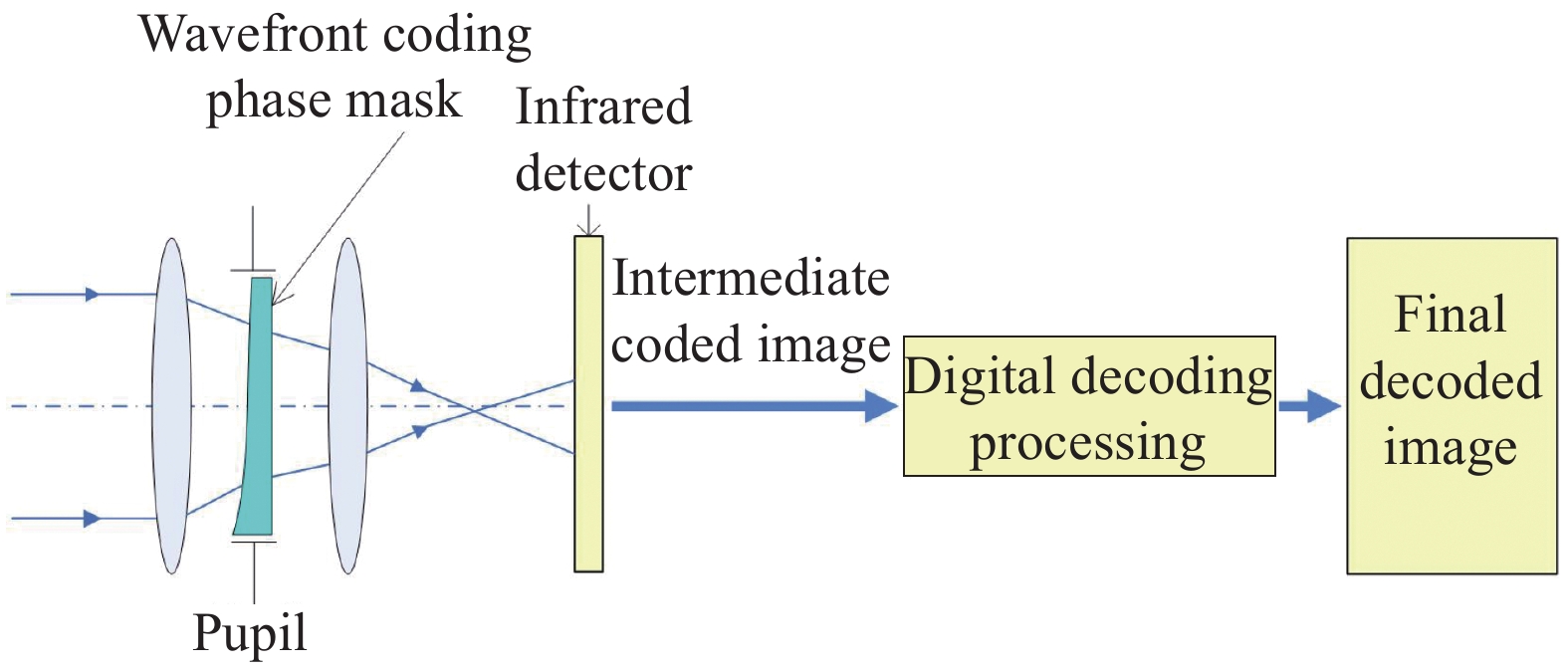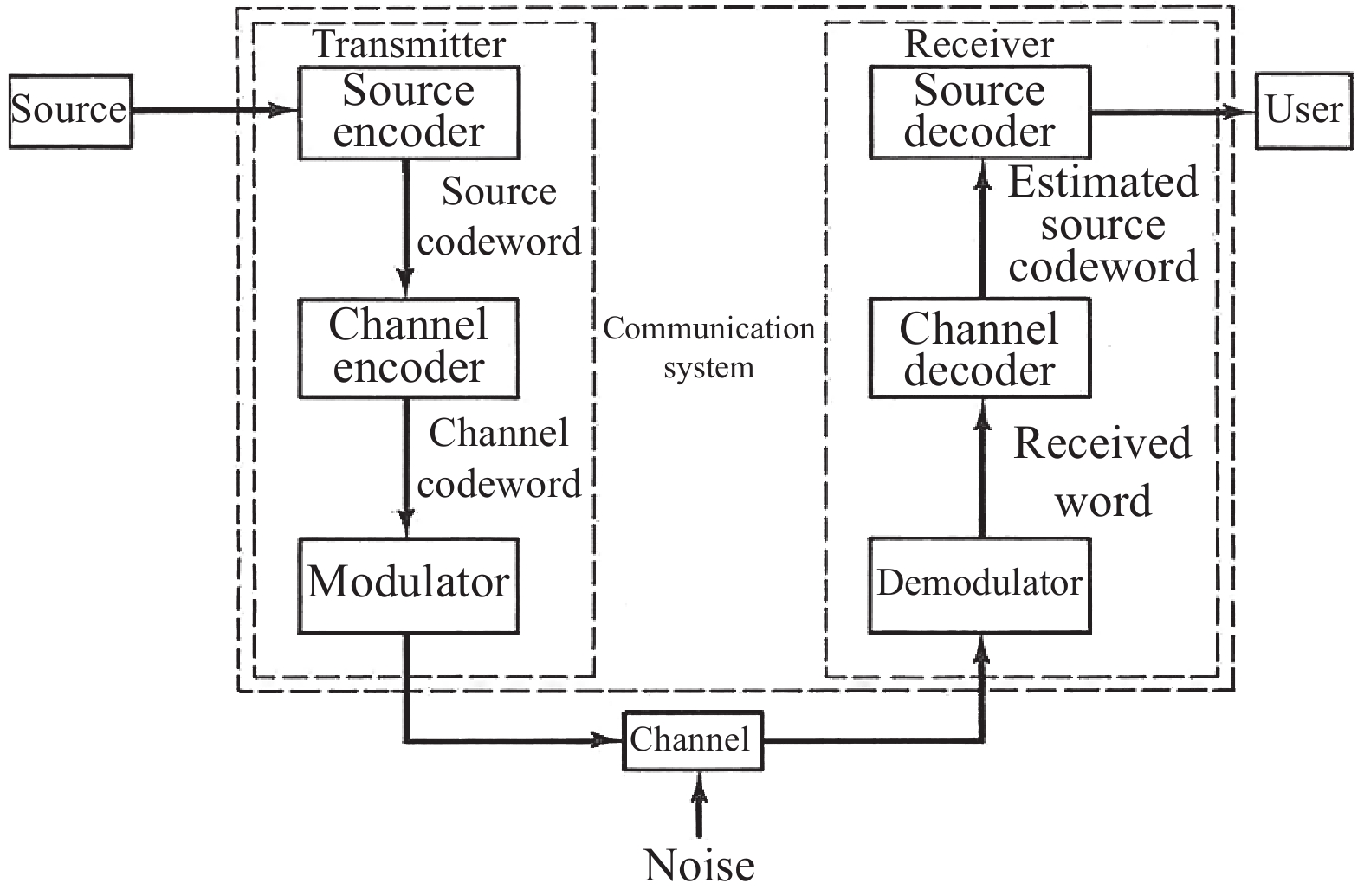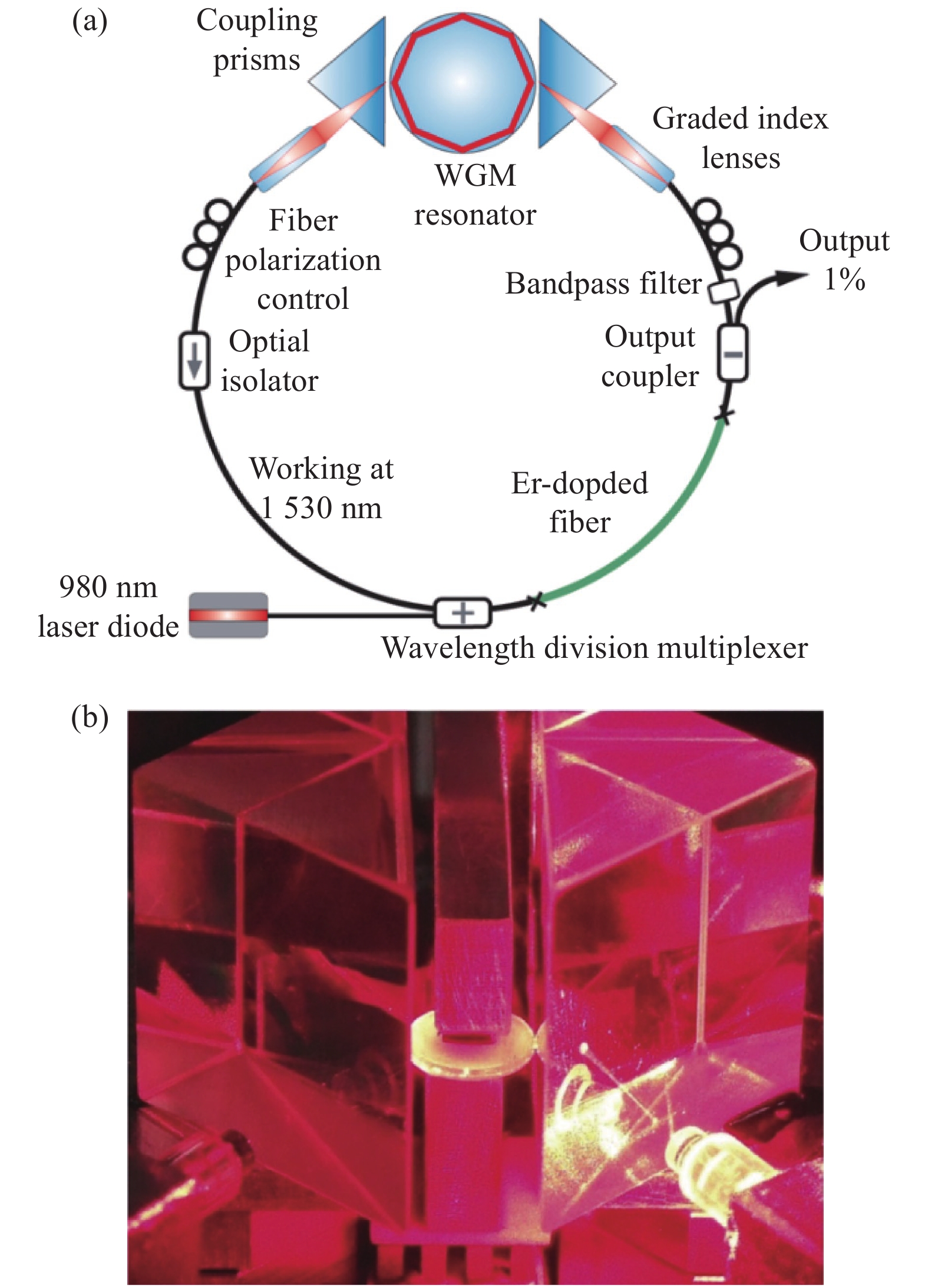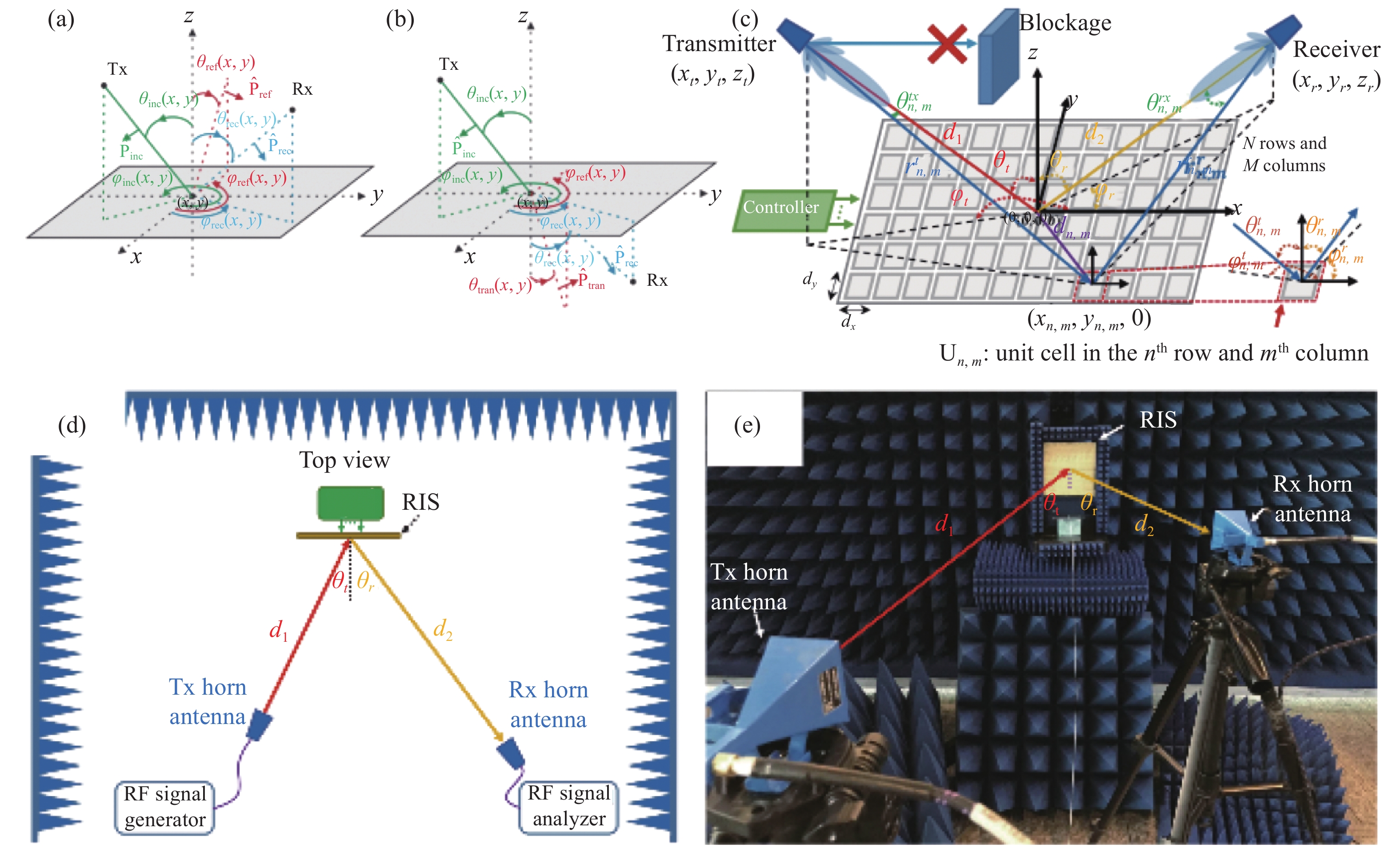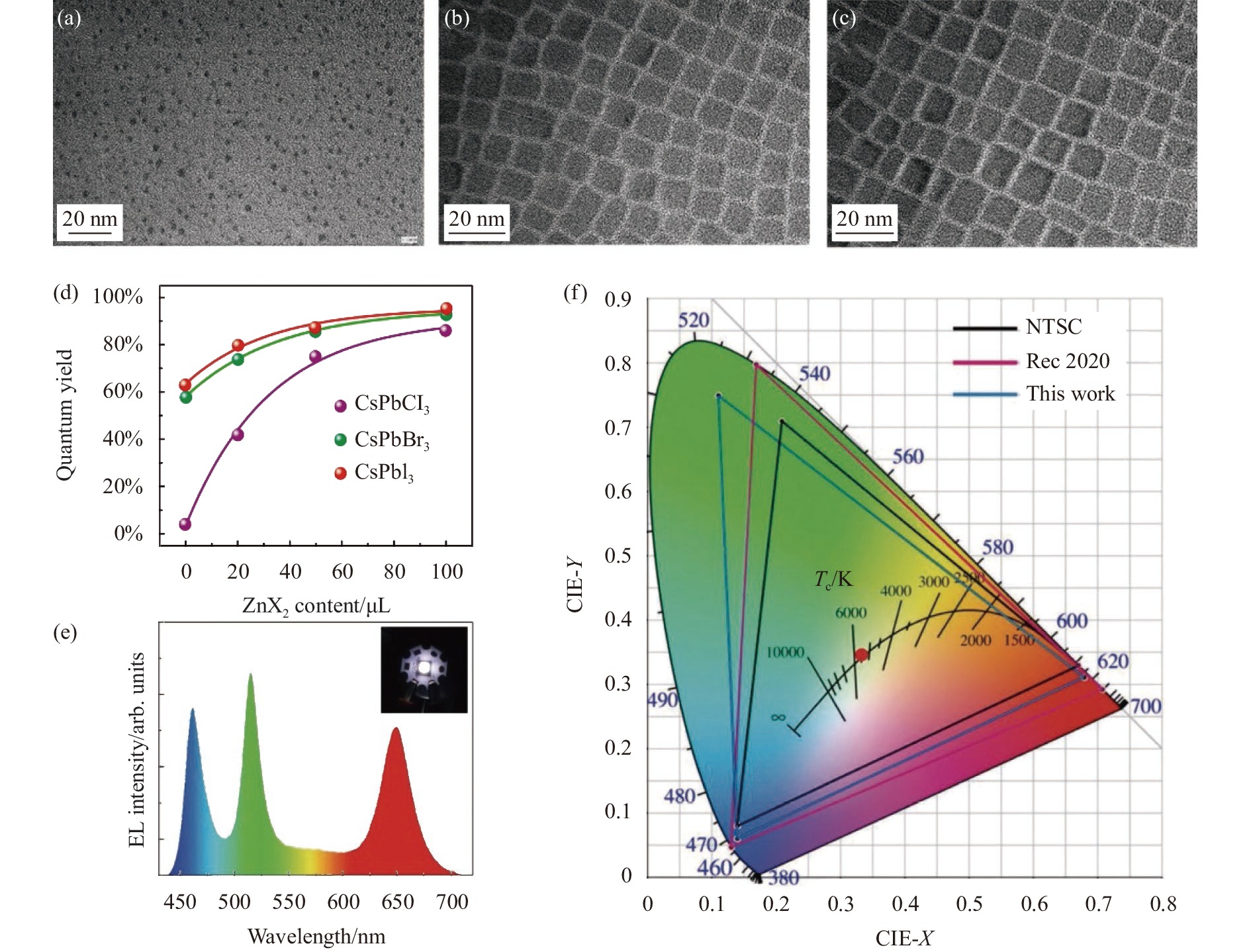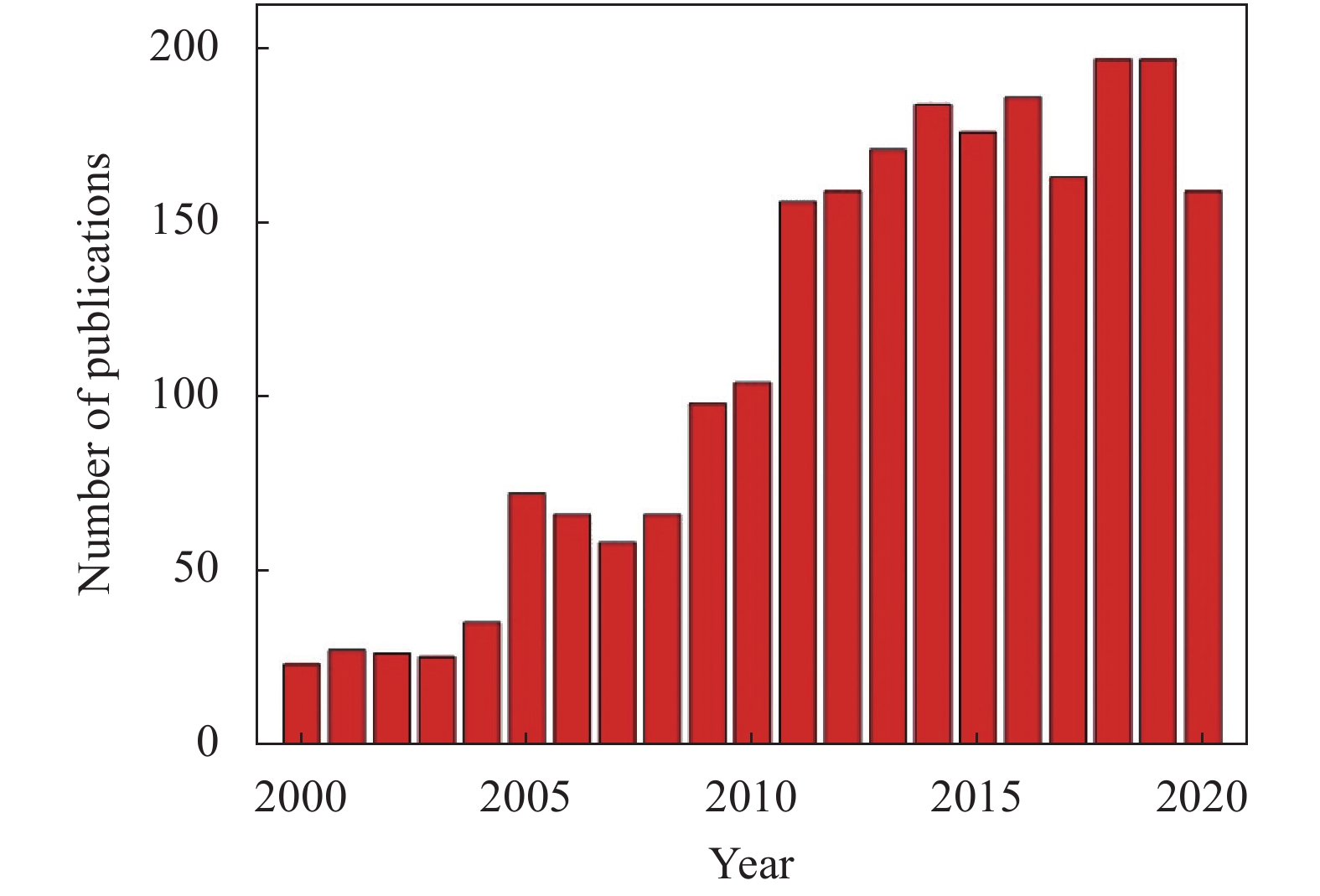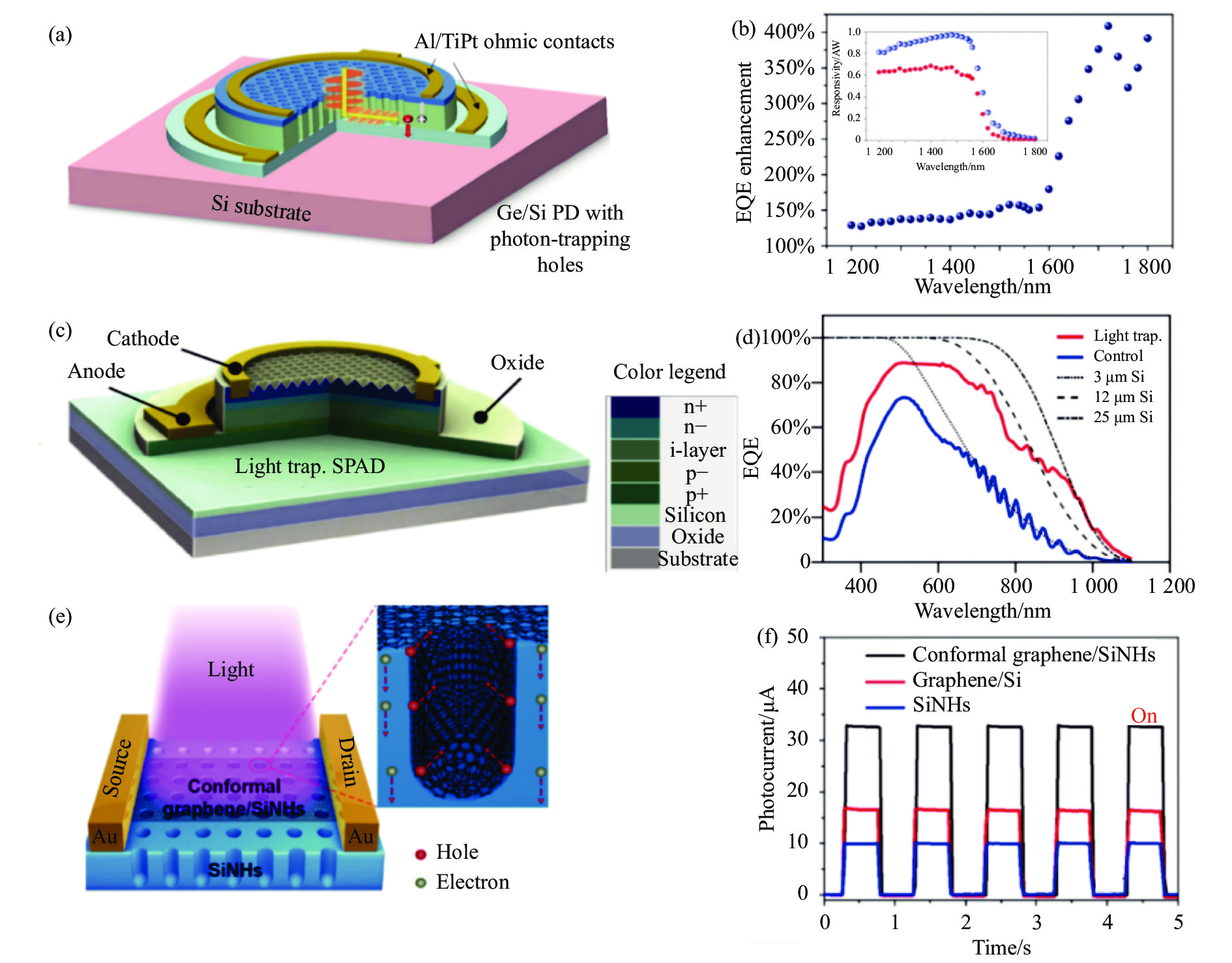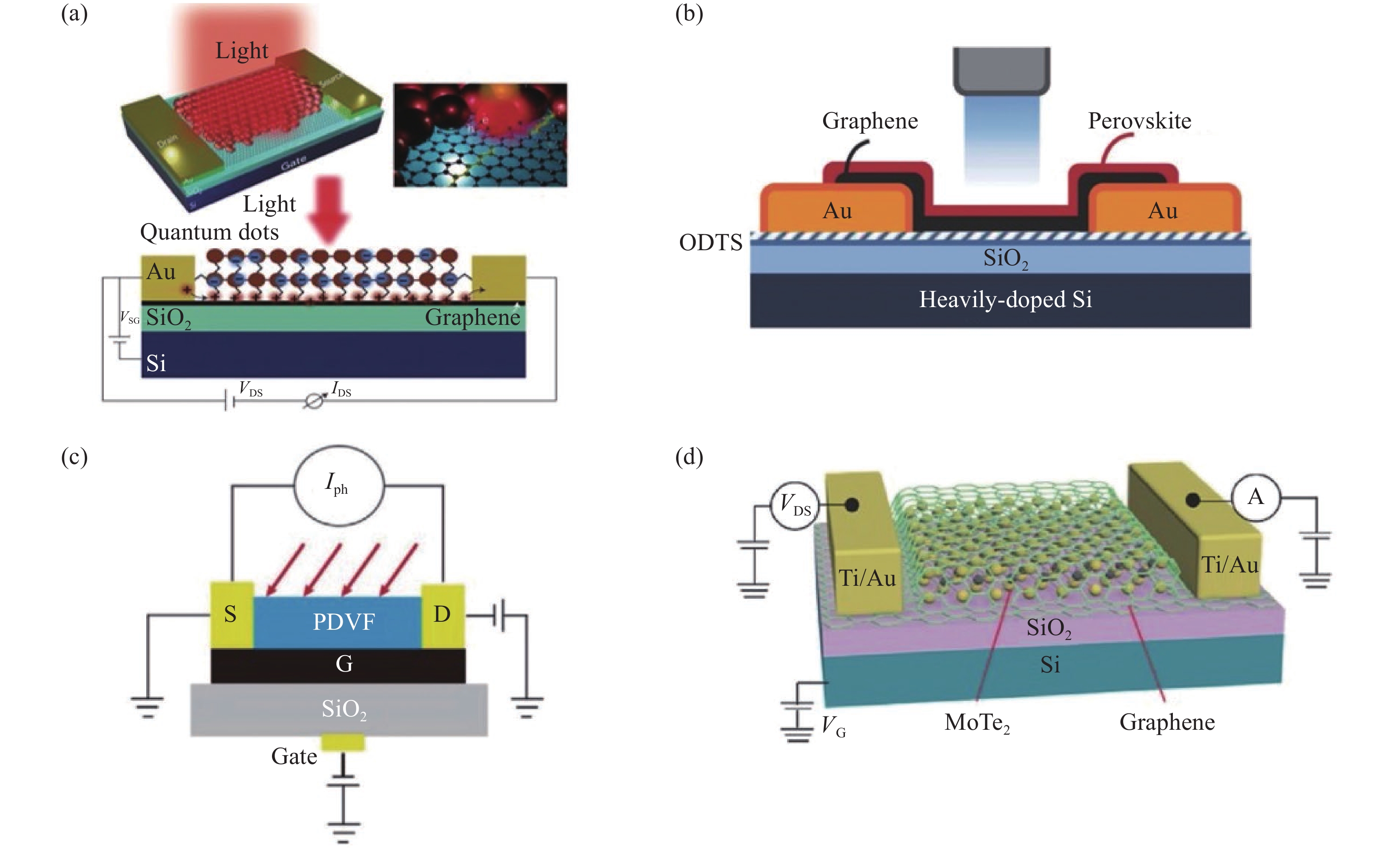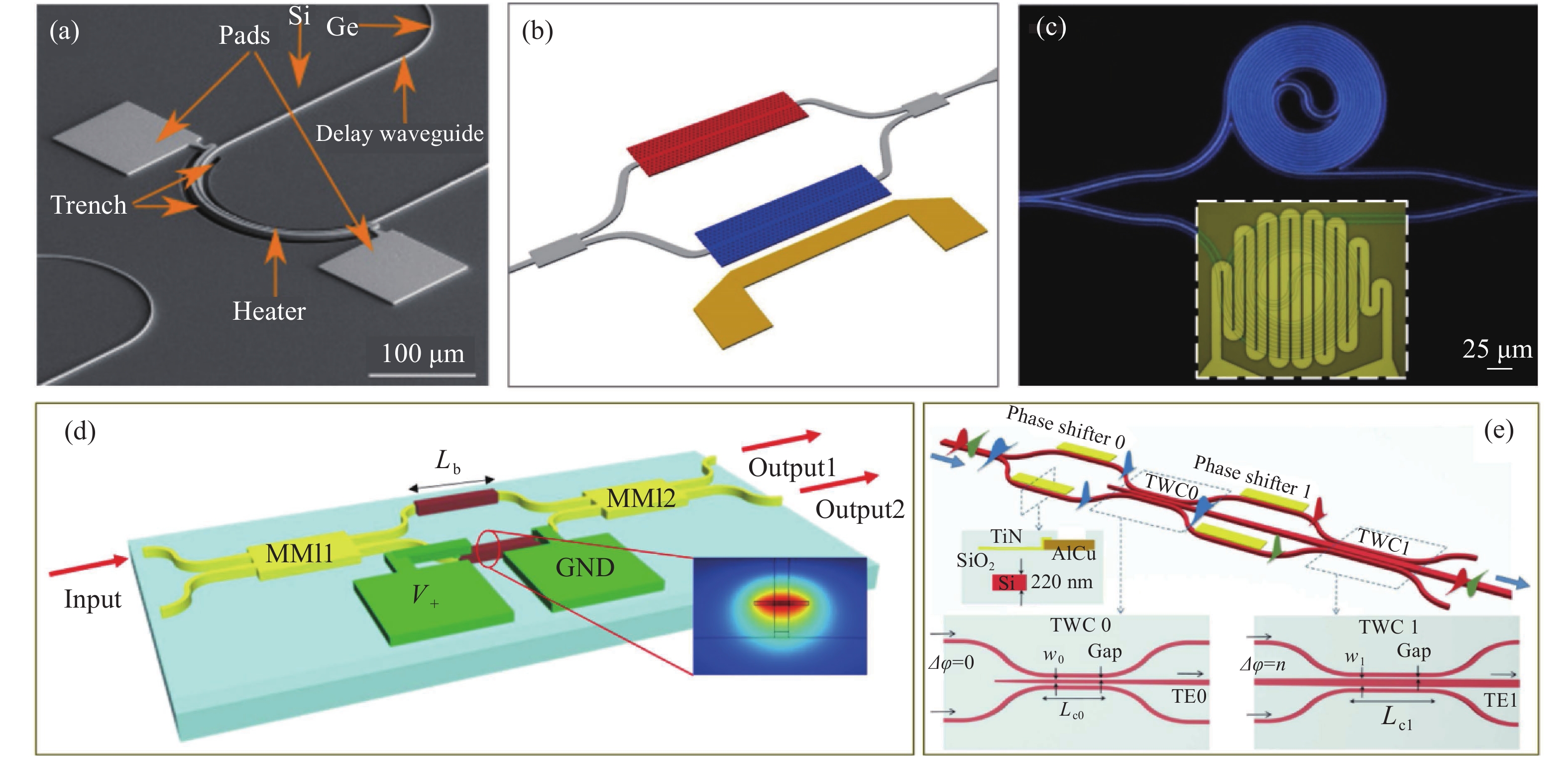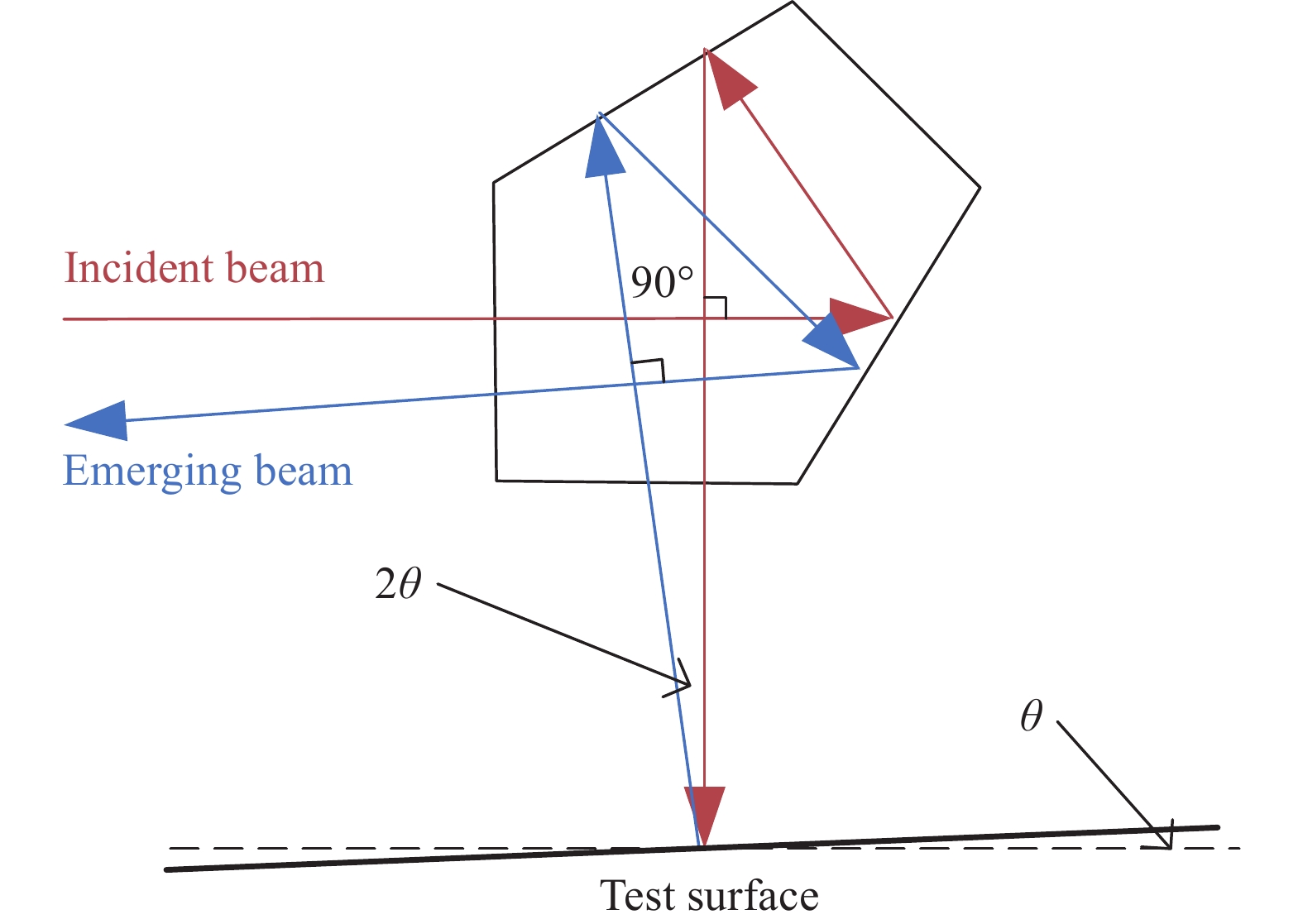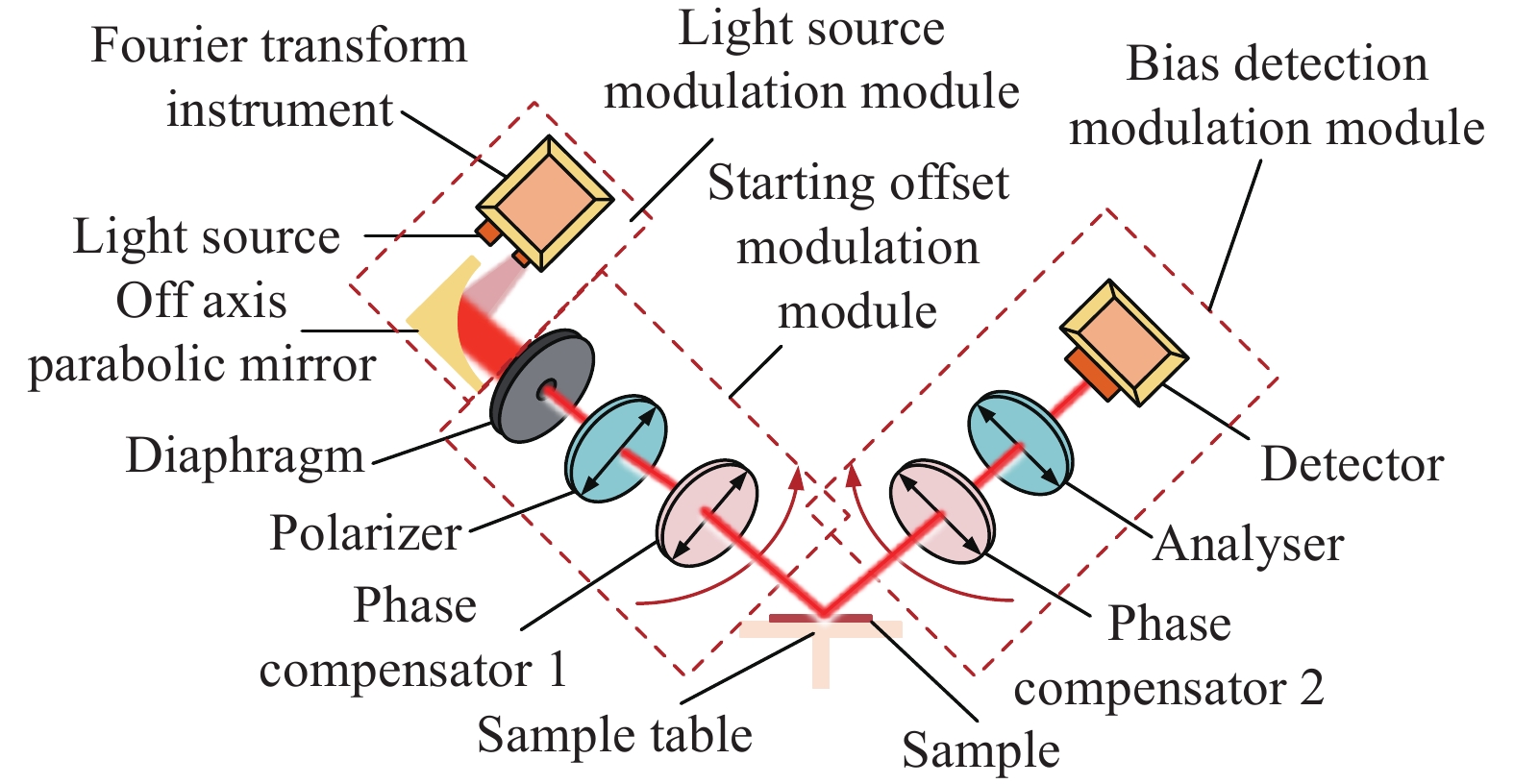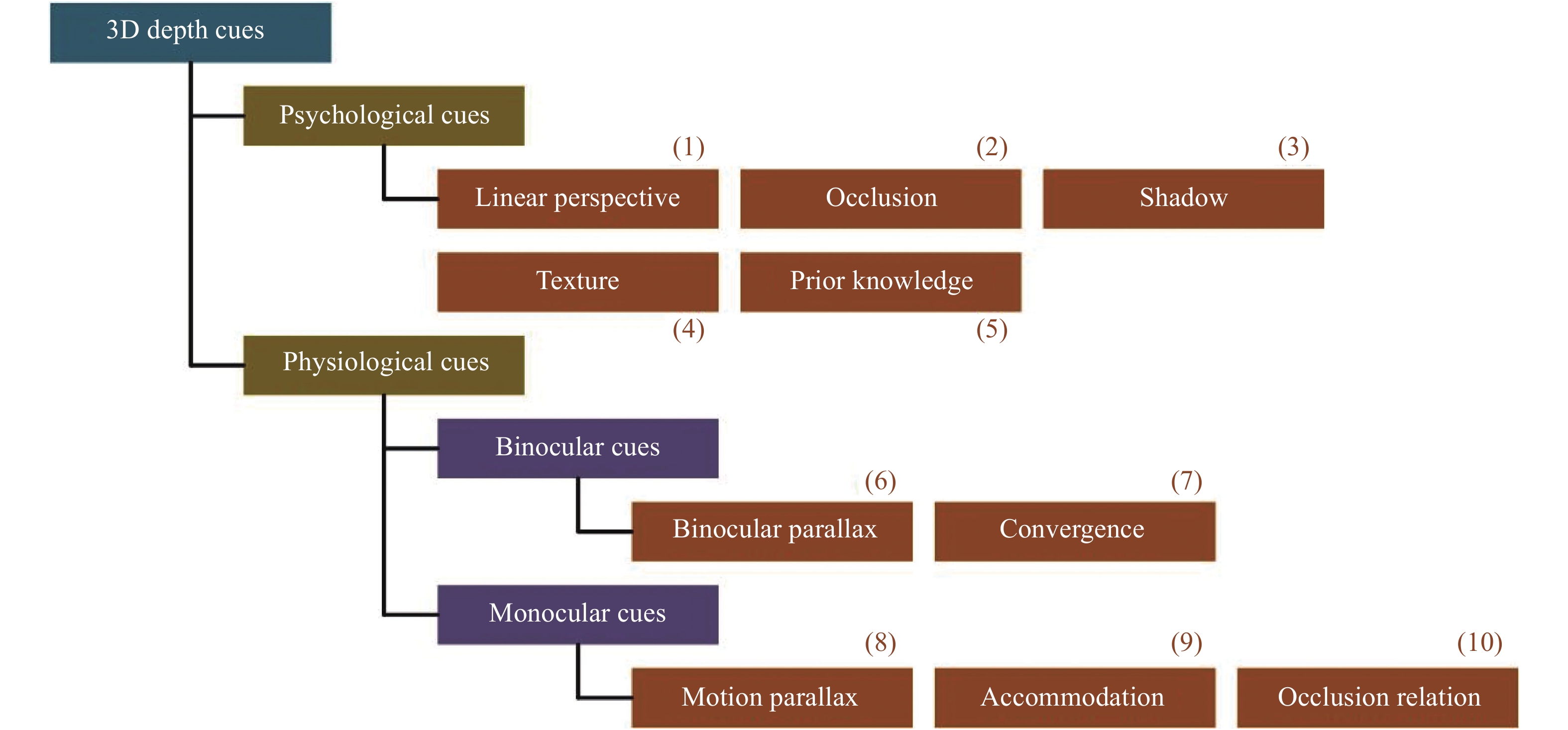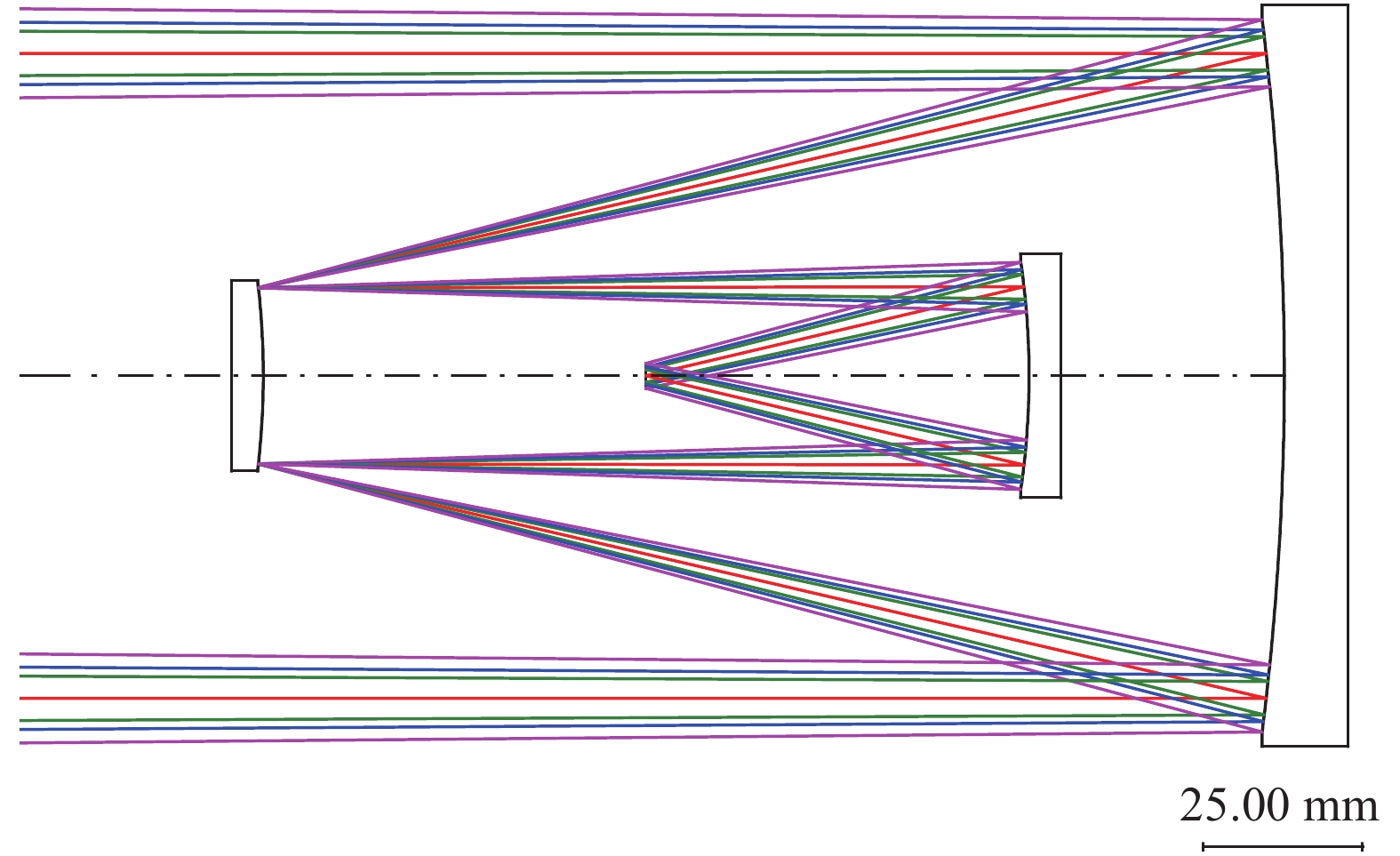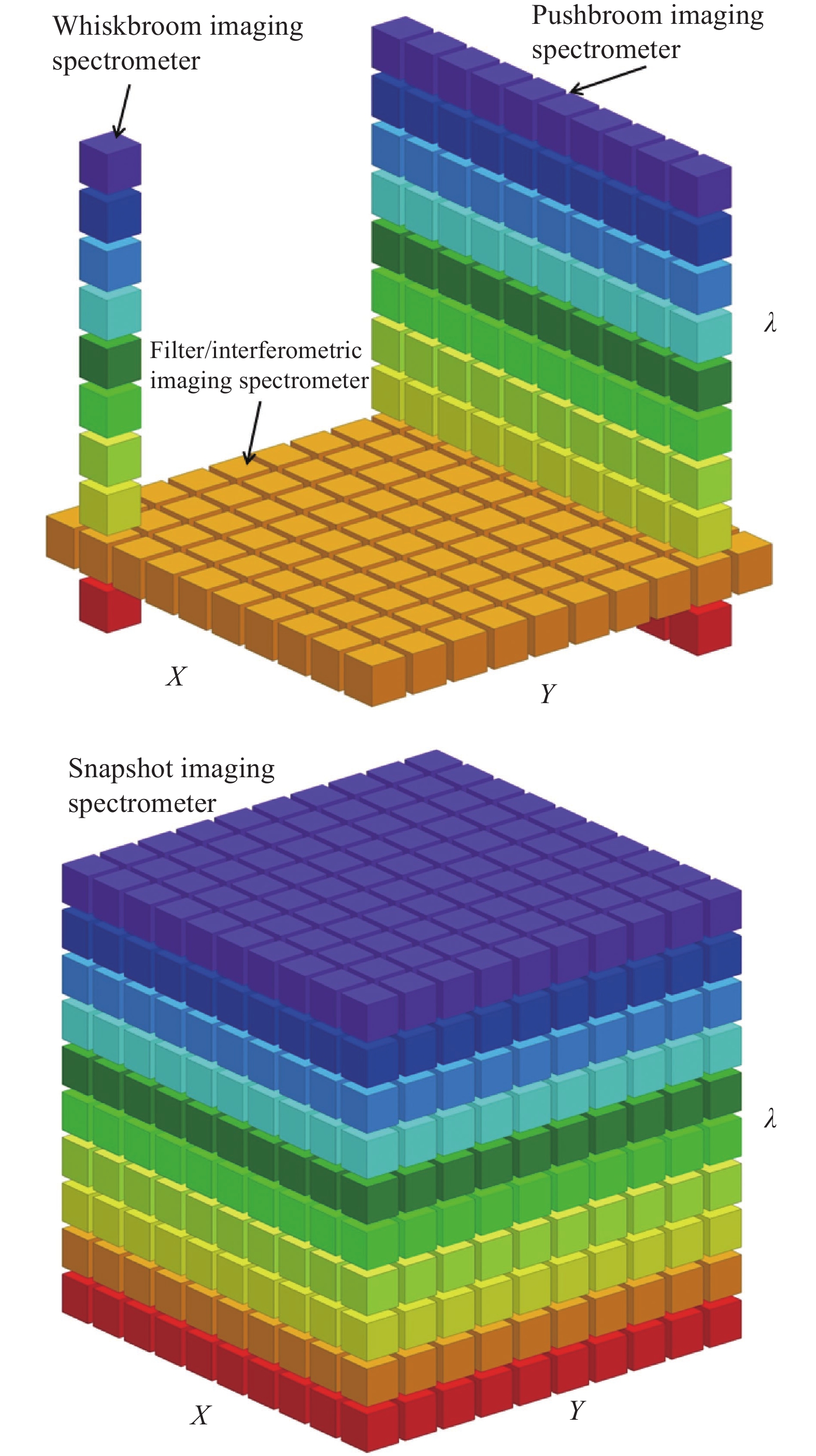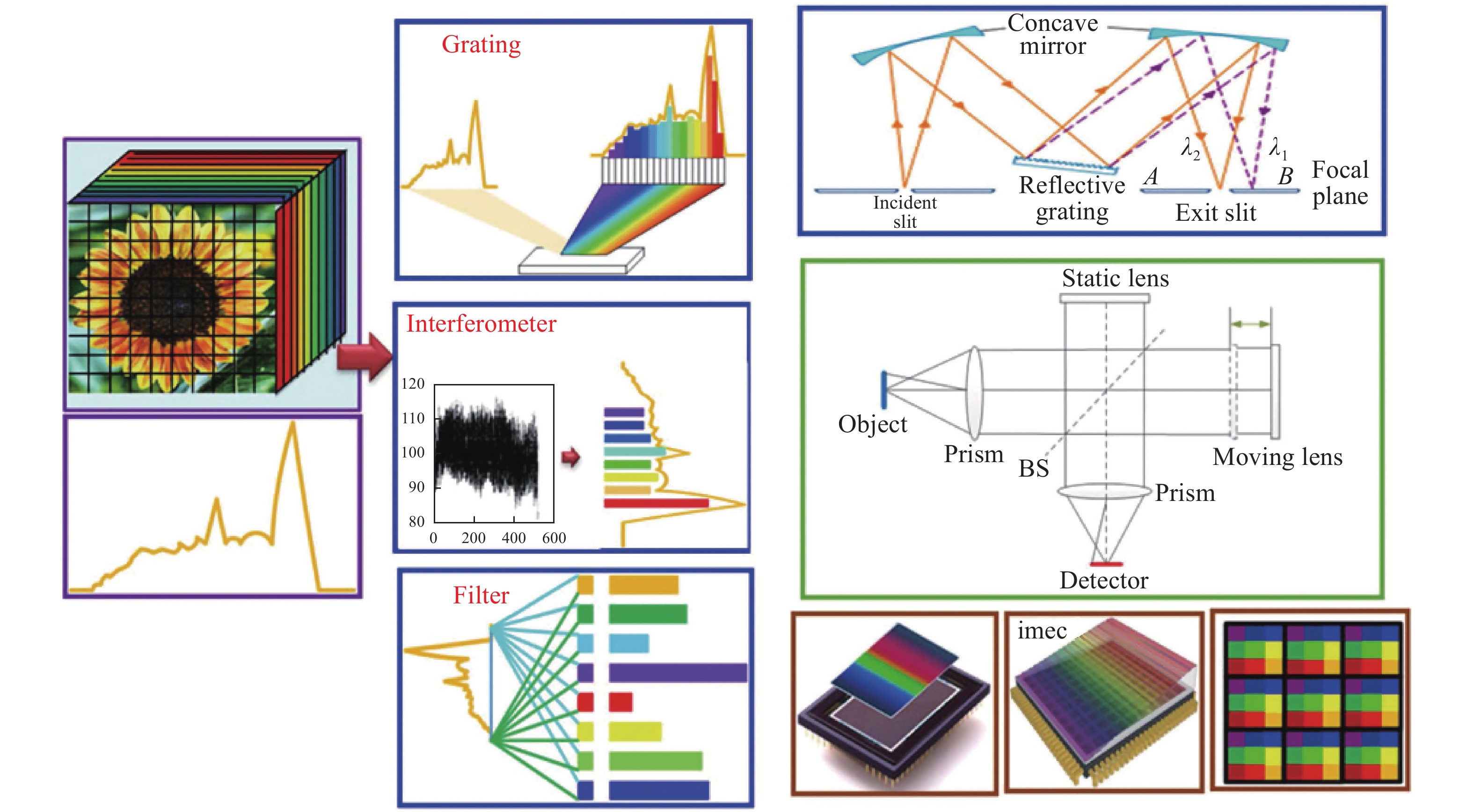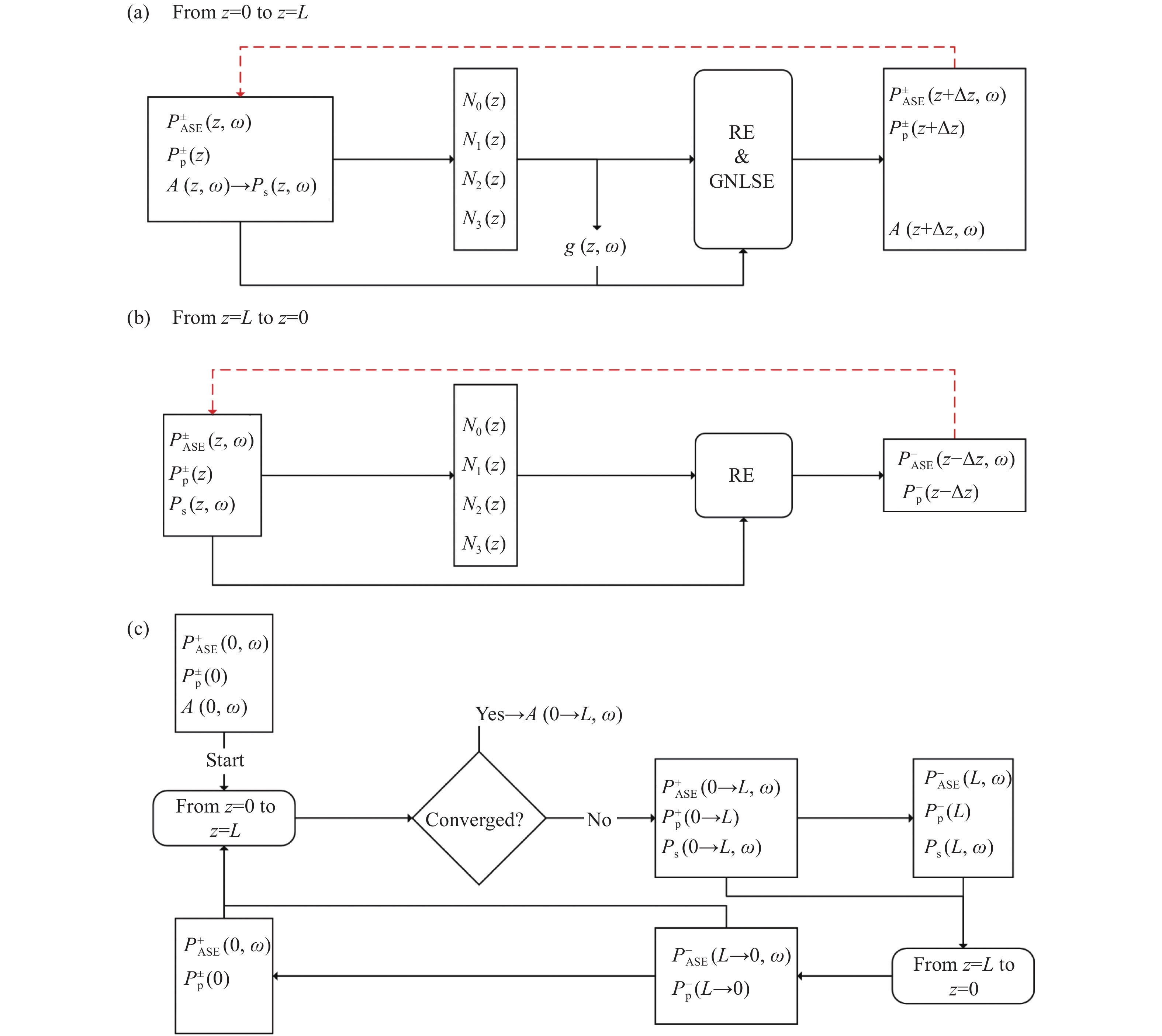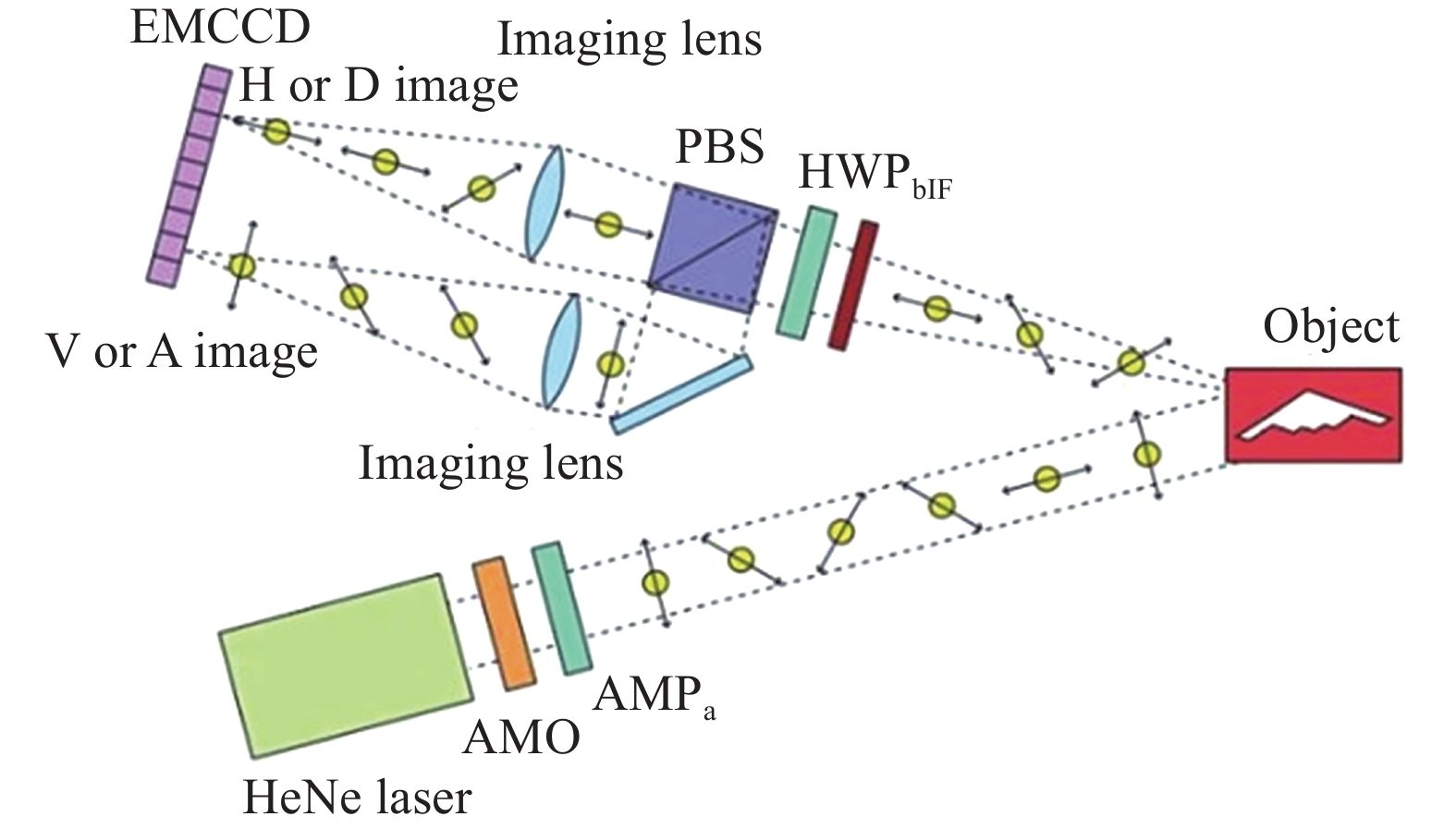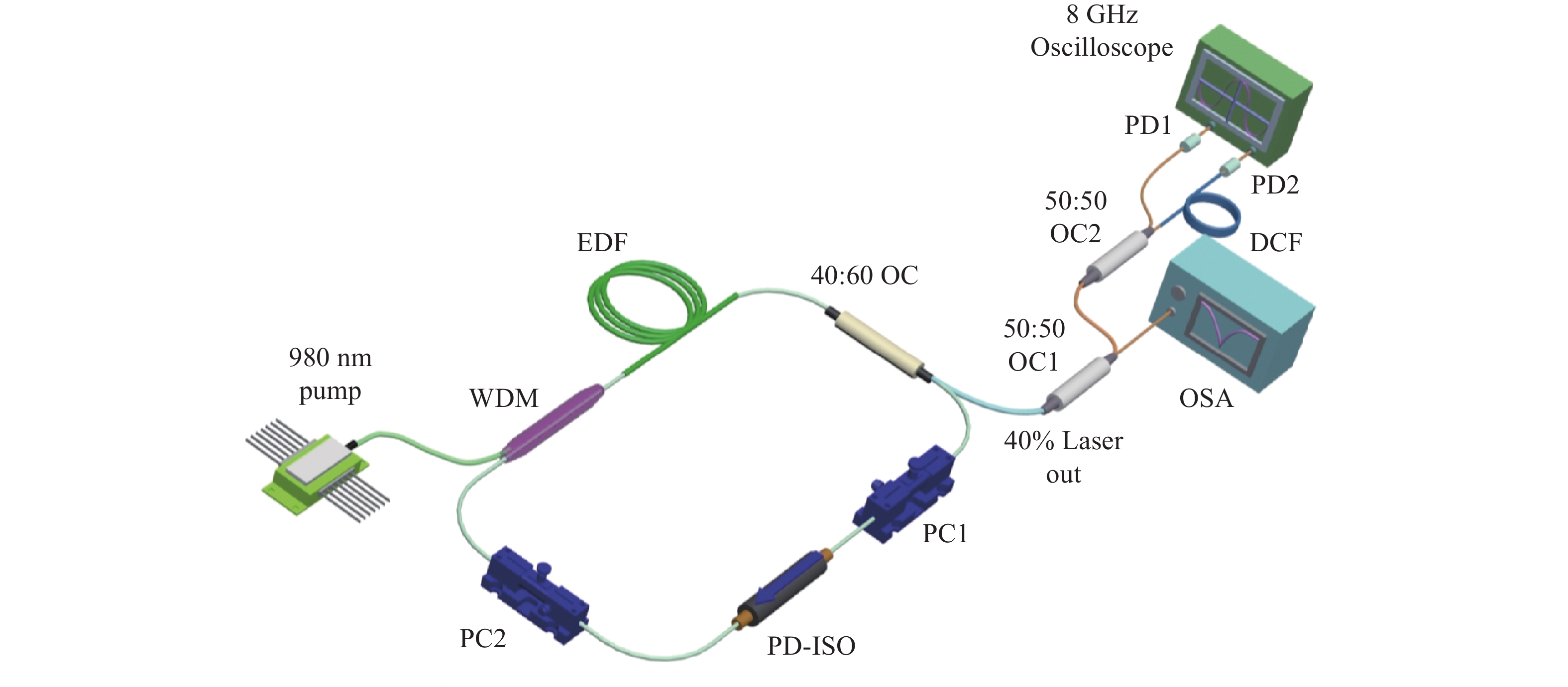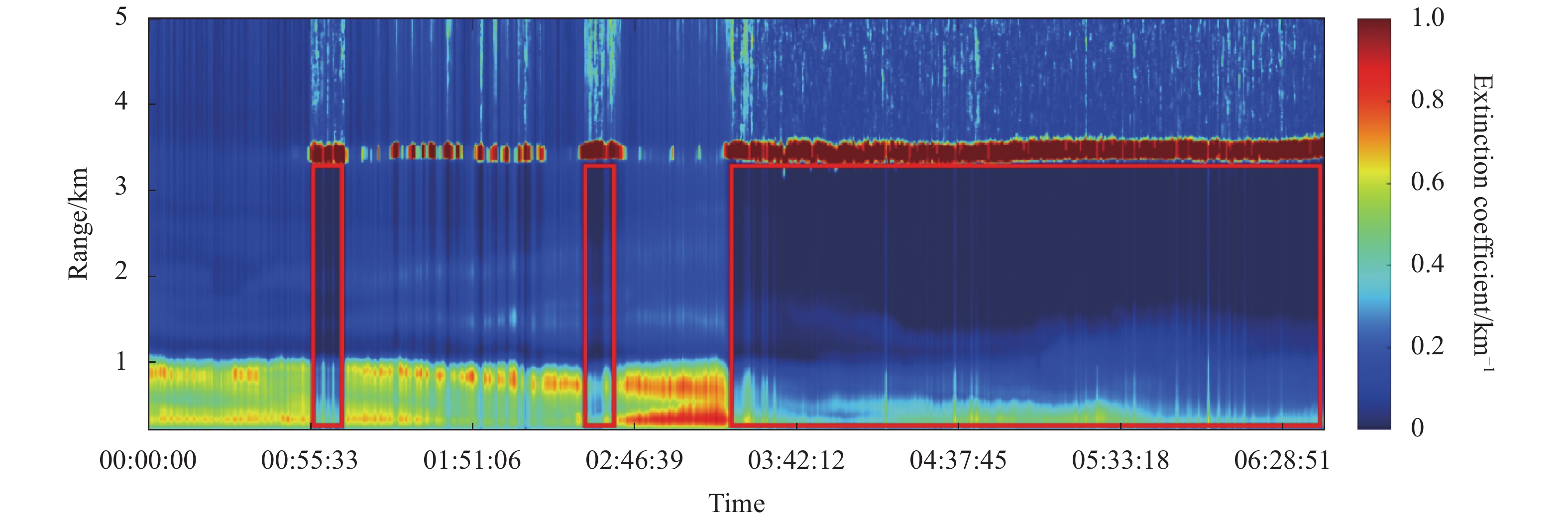2022 Vol. 51, No. 1
2022, 51(1): 20210988.
doi: 10.3788/IRLA20210988
In the late 1950s, the invention of mercury cadmium telluride (HgCdTe) alloy semiconductor material built the foundation of thermal imaging technology and its engineering applications. In 1975, the United States put forward the concept of common thermal imaging modulars——Modular Common Thermal Night Sights based on the first-generation infrared detector. Since then, HgCdTe materials and detectors have been widely applied in the military field. In this paper, the advantages of HgCdTe detector were analyzed from the perspectives of the basic physical properties of HgCdTe material. It was convinced that HgCdTe detector was still the best infrared detector. Furthermore, diversified HgCdTe detector technologies had been developed, which including but was not limited to large area array, planar junction and heterojunction, dual band, very long wavelength, 150 K operating temperature, avalanche detector, etc. With the emerging of the new structure, new mode, new mechanism, new method and new technology, HgCdTe materials and detectors would be promoted to a new height and was the mainstream candidate of the fourth-generation infrared focal plane detector.
2022, 51(1): 20210818.
doi: 10.3788/IRLA20210818
Some problems in modern atmospheric optics and its applications in optical engineering were discussed, and key points were given as follows: (1) Atmosphere could introduce severe troubles to advanced optical engineering systems; (2) It is necessary to consider optical properties of the atmosphere in the design of an optical engineering system; (3) It is necessary to use probability for describing the effect of atmosphere; (4) We could not estimate the effects of atmosphere on an optical engineering system directly from weather condition; (5) It is impossible to determine exactly an atmospheric parameter as a statistical average; (6) A single parameter Cn2 is not enough to describe the optical property of atmospheric turbulence; (7) It is necessary to promote the accuracy of detection results of atmospheric parameters by optical instruments; (8) It is impossible to eliminate completely the effect of atmospheric turbulence on optical engineering systems; (9) It is not worth the effort to investigate some problems concerning ideal conditions for light sources and atmospheric conditions. Some valuable problems were proposed to investigate in the current stage of atmospheric optics.
2022, 51(1): 20210454.
doi: 10.3788/IRLA20210454
As a novel computational optical imaging technology, wavefront coding infrared imaging technology includes two stages of optical coding and digital decoding. The wavefront coding athermalized infrared imaging system is realized by mounting a special-form phase mask near the stop of an infrared optical system to modulate the incident radiation. Its infrared detector produces intermediate coded images. Those intermediate coded images have high similarity over a wide range of ambient temperature. An intermediate coded image is decoded to produce a decoded image with sharpness. In recent years, researchers have made much contribution to its theory and experiment to prove its validity for athermalization. In this paper, combining their previous related works, the authors have respectively introduced research background, basic principle, key technique, typical design scheme and experimental prototype, and prospected its application and development trend in future.
2022, 51(1): 20220017.
doi: 10.3788/IRLA20220017
To understand, study and optimize optical imaging systems from the viewpoint of information theory has been an important research field of the imaging science since the birth of information theory, accompanied by a series of corresponding progress which has been being achieved. However, due to the ''fixed point-to-point'' mode of image information acquisition from the object plane to the image plane in traditional optical imaging systems, studies on them based on information theory are more meaningful in the theoretical sense while just acting as icing on the cake for optimization and design of practical application systems, which makes substantial breakthroughs in new imaging functions are difficult to be made therein. With breakthroughs in both the modern modulation techniques of light fields and new-concept optical imaging techniques based on the high-order correlation of light fields, currently it has been able to encode the target image by using controllable spatiotemporal fluctuations of light fields during the imaging process. This not only puts forward new demands for understanding and optimizing optical imaging systems from the viewpoint of information theory, but also brings new opportunities for the research field of information optical imaging. This paper will first review the domestic and international development history of information optical imaging during the last half century since the birth of information theory, and then discuss its current research status and potential developing tendency by combining with latest progress in the field of optical imaging.
2022, 51(1): 20210905.
doi: 10.3788/IRLA20210905
Single-frequency fiber lasers have attracted extensive attention due to distinctive laser properties on narrow linewidth, low noise, as well as preferred all-fiber structure with good beam quality, high compactness and free of maintenance, which can find widespread applications from advanced scientific research to practical applications including cold atom physics, high resolution spectroscopy, gravitational wave detection, long-distance coherent communications, and so on. Along with the rapid development of fiber laser technique, the performance of single-frequency fiber laser has been improved significantly in the last two decades and the related basic techniques have been built up systematically. Recently, a series of creative research works have been demonstrated in the area of high-performance single-frequency fiber lasers, where impressive progress has been made on newly developed mechanism and structure for single-frequency laser generation, performance improvement on laser power increment, linewidth narrowing, noise suppression as well as operation wavelength extension. Therefore, the research progress on high-performance single-frequency fiber lasers in recent five years was reviewed to reveal current trend in this area as well as the new bottleneck so as to point out the prospect on possible development routine in near future.
2022, 51(1): 20210797.
doi: 10.3788/IRLA20210797
Information metasurfaces have become one of the research hotspots in the field of physics and information, because of the ability of manipulating electromagnetic waves. A series of research progress in the field of wireless communications based on information metasurfaces was introduced. Information metasurface can manipulate electromagnetic waves in real time and directly process digital coding information, and can further perceive, understand, even memorize, learn and recognize information, which makes it show great potential in the field of wireless communications. Firstly, the research progress of channel modeling was introduced and the channel improvement that information metasurfaces could achieve when they worked as a wireless relay. Secondly, the application of information metasurface in the new transmitter system was also introduced, which modulated the amplitude or phase of the carrier waves. Thus several simplified transmitter architectures could be realized. Thirdly, the realization of several new wireless communication systems using the information of the near field, far field and scattering field of the information metasurface was introduced. Finally, the future wireless communication based on information metasurface was summarized and prospected.
2022, 51(1): 20210772.
doi: 10.3788/IRLA20210772
In the modern world, the white light-emitting diodes (LEDs) play an important and basic role on various fields, including illumination and display back board. To obtain excellent performance white LEDs, the emissive materials needed to be studied. As a kind of promising semiconductor, inorganic perovskites (CsPbX3, X=Cl, Br, I) exhibit prominent potentials in the white LEDs, due to their high photoluminescence quantum yields, tunable emission wavelength, high color purity and excellent stability. In this review, the research progresses in the electroluminescent and photoluminescent white LEDs based on inorganic perovskites were introduced. Then, the represent achievements on the white LEDs of the mix of improved inorganic perovskites and other emissive materials, as well as the single components of inorganic perovskites, could be exhibited. In the end, the employment of the white LEDs on visible light communication was highlighted. In addition, the development trends of the white LEDs and visible light communication were summarized and prospected.
2022, 51(1): 20210671.
doi: 10.3788/IRLA20210671
Optical sensing technology has been widely used because of its advantages of high precision, low delay and imaging. With the rapid development of information technology such as big data and Internet of things, the demand for miniaturization and portability of optical detection and inspection platform is becoming more and more urgent. In order to overcome the dependence on large-scale special equipment and improve the applicability of on-site rapid detection and light-load platform application scenarios, in recent years on-chip integrated optical sensing technology has attracted great attention. With the integration of optical source, optical sensing and photoelectric detection units, as well as the development of on-chip light dispersion technology, the on-chip integration of optical sensing signal extraction and photoelectric signal conversion can be effectively realized, which contributes to the realization of the miniaturization and multi-functional integration. The relevant technical principles and technology development status were introduced, the pros and cons of the existing techniques were discussed, and the future development direction and application prospects were summarized.
2022, 51(1): 20211114.
doi: 10.3788/IRLA20211114
Optical fiber hydrogen sensors uses optical fiber as the medium of light transmission or sensing, and realizes hydrogen detection based on the physical and chemical properties of hydrogen sensitive materials. It has excellent characteristics such as intrinsic safety, strong stability, small volume light weight and good reusability, which makes it become one of the research hotspots in the field of hydrogen sensing and optical fiber sensing. The action mechanism and characteristics of typical hydrogen sensitive materials were introduced. Several typical optical fiber hydrogen sensor technologies and new progress according to the modulation mechanism of hydrogen sensitive materials were reviewed, a new optical fiber hydrogen sensor technology based on stimulated Raman gain or dispersion was introduced, and finally the problems to be solved in the practical application of optical fiber hydrogen sensor from the aspects of the key technology and environmental adaptability were analyzed, as well as the future research direction was prospected.
2022, 51(1): 20210758.
doi: 10.3788/IRLA20210758
A novel multi-core fiber comprehensive parameter test system based on quantitative phase microscopy method, Brace-Köhler compensator method and machine vision technology was introduced. In order to characterize the test capability of peoposed system, the refractive index distribution and geometric structure of a seven-core fiber from YOFC, and the internal stress distribution of a single-mode fiber from Corning were obtained by this system, respectively. According to the former research, the quantitative phase microscopy method using transverse measurement could avoid the performance damage caused by truncated optical fiber efficiently. The improved Brace-Köhler compensatormethod was used to optimize the acquisition to get the optical delay. Combined with the machine vision technology, the system realized multi-modules, high spatial resolution, fast and accurate fiber parameter measurement. After sample processing, program debugging and optimization, the experiment results show that the accuracy of relative refractive index differencein multicore fiber was about 5×10−4 magnitude and the internal stress measurement resolution of single-mode fiber wasabout 0.5 MPa. The comparison with the technicalindicators of existing optical fiber products proves that the system has measurement accuracy, and the test results provide data support for the application of multi-core fibers in multiple fields such as transmission and sensing.
2022, 51(1): 20210811.
doi: 10.3788/IRLA20210811
InSb crystal is one of typical infrared sensing materials for fabricating photonic InSb detector used in the mid-wavelength infrared spectral range between 3-5 μm. InSb infrared detector has been featured by excellent performance, capable for making large-scale arrays, high sensing stability and relative low costs. It has been widely used in military and high-end civilian infrared system. Nevertheless, some InSb coherent shortcomings, such as responding spectral range nonadjustability, long-wavelength infrared spectrum range undetectability, and relative low photo-generated carrier lifetime which limites high operating temperature performance of the detector, makes the InSb detector inefficient in engineering application. In this paper, it is systemically introduced the novel InSb-based materials developed for the purpose of improving the coherent features of InSb material. Those materials include complex alloy and low-dimensional quantum structural material based on InSb compound. For complex InSb-based semiconductor alloy material, phase diagram, relation between energy band gap and alloy composition, energy band gap variation with temperature were presented. Also typical infrared sensing performance of the detector with the novel alloy material was presented. For low-dimensional quantum InSb material, fabrication of the structure, relation between energy band gap and quantum structure size, and typical infrared photo-response of the prototype detector were presented. The tendency of the novel InSb-based infrared sensing material and its developing focus were discussed at the end.
2022, 51(1): 20210995.
doi: 10.3788/IRLA20210995
Compared with the traditional analog infrared focal plane array (IRFPA), the digital IRFPA has many technical advantages, and is the development direction of the IRFPA technology. The research and development status of the digital IRFPA was introduced. Firstly, the differences and features of analog and digital IRFPA were analyzed. Then, the detailed circuit blocks of column-level ADC and digital pixel digital readout integrated circuit (DROIC) were described, and the links between circuit blocks and performances of DROIC were analyzed. Finally, the technical trends of different DROICs were predicted. The developmednt of IRFPA towards a larger array format, a smaller pitch and better performance, demands higher DROIC performance. With DROIC architecture and module circuit advancement, the column-level ADC DROIC will be widely used in large-format and small-pixel IRFPAs, and the digital pixel ROIC will be widely used in long-wavelength IRFPAs.
2022, 51(1): 20210826.
doi: 10.3788/IRLA20210826
Infrared detectors play an important role in the areas of military investigation, remote sensing, communication, precision guidance and aerospace, which have been concerned by the world for a long time and have high research value and good application prospect. The integration of micro-nano structures and traditional semiconductor detector can effectively improve the photon coupling efficiency and equivalent optical path, exceed the absorption limit of traditional bulk materials, improve the quantum efficiency of photoelectric devices and reduce the dark current of devices, providing a new technical means for the research of high-performance infrared detectors. Various types of enhanced infrared photodetectors with micro-nano structures were reviewed in this paper. Firstly, the basic principle of performance enhancd infrared detectors with micro-nano structures were introduced. According to the different materials and functions of micro-nano structures, it was classified and compared; Secondly, the research progress of the above micro-nano structures in infrared detectors were systematically demonstrated from the aspects of dielectric type, surface metal type and 3D plasma cavity type. Finally, the development trend of infrared detector based on micro-nano structure enhancement was prospected.
2022, 51(1): 20210897.
doi: 10.3788/IRLA20210897
Short wavelength infrared band (SWIR) as one of the "atmospheric windows", the detectors working in this wavelength range can receive more radiation energy from the target and gain higher sensitivity. In addition, SWIR detecting and imaging is based on the reflection imaging from the target similar to visible light, consequently it is typical of the distinct details resolution ability that medium and long wavelength infrared imaging lacks. With the wide application of SWIR detectors in military and civil area, higher requirements are put forward on the both performance and cost of SWIR detectors. InGaAs detectors is one of best choice as SWIR detectors since it has high sensitivity, high-speed response and low cost due to its quantum efficiency up to 70%-90% and high mobility close to 8000 cm2/(V·s) at room temperature. However, in order to further expand the wavelength, improve the imaging resolution, and reduce the cost, SWIR detectors based on new materials and new mechnism such as type-II superlattices, colloidal quantum dots and Si-based materials have been developed. This paper firstly summarized the advancement of InGaAs SWIR detectors from the main foreign and domestic research institutions including Sensors Unlimited Incorporation (SUI), FLIR, Teledyne Technologies, Teledyne Princeton Instruments of the United States, Sofradir and New Imaging Technologies (NIT) of France, Semiconductor Device (SCD) of Israel, Xenics of Belgium, etc. Then the new materials and new technology of SWIR detectors were introduced. Finally, the further development trendency of SWIR detectors was proposed.
2022, 51(1): 20210823.
doi: 10.3788/IRLA20210823
Near-infrared photodetectors are widely used in night vision, biomedical, environmental monitoring and many other fields. Two-dimensional graphene have great potential in infrared detection due to their unique properties (Zero band gap structure, high carrier mobility, adjustable work function). In order to take full advantage of graphene and overcome its disadvantages of low absorption and high noise, the researchers designed the hybrid structure using localized modulation of grating to improve the infrared detector performance. The research results of localized field enhanced graphene-based near-infrared photodetector were summarized, the localized field enhanced devices with single absorption layer was introduced, and the advantages and disadvantages of devices based on different types of photosensitive materials were analyzed. The double absorption layer local field enhanced device was further introduced, and the current polarity and other related researches of the research group in the field of double absorption layer devices was summarized. Finally, the research on the extension of the localized field enhanced detector was introduced, and the development trend of this kind of devices was briefly summarized and prospected.
2022, 51(1): 20211111.
doi: 10.3788/IRLA20211111
With the development of information technology, integrated photonics at telecom band has caught broad attention, made outstanding progress in the past few decades, and has also been commercialized in recent years. The development of integrated photonics at the telecom band has also inspired people to be interested in integrated photonics at the mid-infrared (Mid-IR) band (2-20 μm). Mid-IR has promising potential in applications such as space optical communications, thermal imaging, material detection, and analysis, which is of vital significance in national development, national security, and improvement of people ’s welfare. Utilizing semiconductor fabrication processes, a miniature Mid-IR optoelectronic system integrated on a chip has superior advantages in terms of the device ’s size, power consumption, and mass production compared to conventional solutions. Therefore, it is meaningful to develop chip-scale Mid-IR photonics. In this review, the representative works and breakthroughs of fundamental integrated devices at Mid-IR wavelength including modulators and detectors in recent years were reviewed and evaluated. The classification, performance matrics, parameters, and fabrication methods of different kinds of devices were discussed and compared comprehensively. Meanwhile, the developing progress, unsolved problems, and prospects of integrated Mid-IR devices were analyzed.
2022, 51(1): 20210953.
doi: 10.3788/IRLA20210953
On the basis of summing up the difficulties of testing large flat mirror, for the sake of testing super-large surface especially for the tertiary mirror of Thirty Meter Telescope (TMT-M3) with precise method, a new technology syncretized pentaprism scanning method and Subaperture Stitching Interferometry (SSI) was proposed. The large mirror was tested by pentaprism scanning and SSI successively, the basic principle of the metrology was introduced and researched, and a reasonable optical testing project of TMT-M3 with the aperture of 3.5 m×2.5 m was made, the flow chart, pentaprism design, aberration fitting of pentaprism scanning, and the optimum stitching algorithm were analyzed particularly. And a prototype of TMT-M3 was developed for experimental verification. The Root Mean Square (RMS) and slope Root Mean Square (slopeRMS) values are 28.676 nm and 0.97 μrad, respectively.
2022, 51(1): 20210976.
doi: 10.3788/IRLA20210976
According to the transmission mode of polarized light in Mueller ellipsometry, a characterization method for the thickness and optical constants of isotropic nano films based on Self-Adaptive Differential Evolution algorithm (SADE) was proposed. By establishing the least square model of the output light intensity with respect to the Mueller matrix of the standard sample to be measured, the elements of the Mueller matrix were solved by using the Sade algorithm, and the Mueller spectral curve obtained by fitting was compared with that measured by dual rotating-compensator Mueller matrix ellipsometer (DRC-MME), and the film thickness was calculated by using the transfer matrix. The SiO2/Si standard samples with calibration values of (104.2±0.4) nm and (398.4±0.4) nm were simulated and calculated. The experiment shows that: when numbers of iterations accumulated to 80 and 87 respectively, the residual square sum of the light intensity of the objective function converges to the minimum values of 0.97 and 1.01. The calculated film thickness values are (103.8±0.6) nm and (397.8±0.6) nm respectively, and the relative errors are both less than 1%. At the same time, a metrological ellipsometer was used to calculate according to the obtained refractive index, and the calculated values of the film thickness were 104.1 nm and 398.2 nm. It is verified that SADE has the characteristics of simple calculation and accurate global optimal solution in solving the parameters of isotropic nano films at a similar convergence rate.
2022, 51(1): 20210927.
doi: 10.3788/IRLA20210927
Haidinger’s brushes is a kind of inward vision phenomenon that human eyes perceive linearly polarized light, which can be used in the detection of macular disease. It was difficule to simulate and analyze accurately for Haidinger's brushes images, that the polarization perception of human eyes was calculated based on the three-dimensional (3-D) Jones matrix and vector to establish a polarization perception model of human eyes. The polarization aberration of ideal, myopic, hyperopic and astigmatic eyes was analyzed by using the 3-D Jones polarization perception model. The results show that the diattenuation of normal incident linearly polarized light at 460 nm caused by the diopter difference of [−5D, +5D] is less than 1% when the medium in human eye is uniform. Based on the established 3-D Jones polarization perception model of human eyes, the 3-D Jones vector of incident linearly polarized light is used to simulate the Haidinger’s brushes images of different incident light fields and human eye diopters. The objective is to provide effective theoretical basis for the study of Haidinger’s brushes and expand the application of Haidinger’s brushes in the detection of human macular disease.
2022, 51(1): 20210935.
doi: 10.3788/IRLA20210935
Compared to 2D display, 3D display presents information with more realistic visual perceptions. It is a vital technology in the fields of 5G, metaverse, big data and internet of things. 3D display based on computer-generated holography can provide various kinds of depth cues. It presents an outstanding 3D effect and is considered as an ultimate form of 3D display. It is believed that holographic 3D display would have broad application prospects in intelligent manufacturing, distance education, telecommuting, entertainment and social networking. In this review, the history and important technical nodes of computer-generated holography were introduced. According to the current status of the technology, main challenges faced by high-quality dynamic holographic 3D display were introduced, including limited accuracy of computer-generated hologram, imperfect performance of wavefront modulator and holographic display system, and shortage of 3D content. Focusing on these challenges, the existing solutions were summarized. Advantages and disadvantages of various solutions were compared. Research directions of high-quality dynamic holographic 3D display were analyzed, including low-noise holographic algorithms, distortion calibration methods, and 3D content generation technologies. Holographic 3D display with low noise, high refresh rate and high precision, which were inevitable in some applications such as meteverse, could be realized by addressing these issues.
2022, 51(1): 20210986.
doi: 10.3788/IRLA20210986
The three-mirror reflective optical system can achieve high optical performance because of its ability to correct the aberrations of spherical aberration, coma and astigmatism at the same time. Based on the characteristics of small number of mirrors and acceptable alignment complexity, it is widely used in the field of optical imaging. In particular, the off-axis three-mirror optical system occupies an important position in high-performance optical instruments and equipment due to its many advantages, such as with unobscuration and with ability of large field of view. Taking the development of typical three-mirror optical system as the main line, various types of three-mirror optical systems were introduced comprehensively, including coaxial three-mirror optical system, two-axis three-mirror optical system, off-axis three-mirror optical system and afocal three-mirror optical system, their optical configuration characteristics, relevance and optical system performance were discussed, and design examples were gived for researchers in the field of optical design.
2022, 51(1): 20210940.
doi: 10.3788/IRLA20210940
Imaging spectrometers, which collect data over three dimension-two spatial and one spectral so that a complete dataset is typically referred to as a datacube, is one of the most powerful and widely used characterization tools in accurate mapping of wide areas remote sensing, object identification and recognition, environment assessment and management, clinical diagnosis imaging and process monitoring and control. According to the different spectral principle and component, imaging spectrometers were divided into four classes as filtering imaging spectrometers, dispersive imaging spectrometers, interferometric imaging spectrometers and snapshot imaging spectrometers. A comprehensive review of main representative forms and applications of various imaging spectrometers on the basis of classification was provided, and the possible development and application of imaging spectrometers in the future were prospected.
2022, 51(1): 20210981.
doi: 10.3788/IRLA20210981
While imaging the spatial characteristics of the target, the hyperspectral camera, which combine imaging technology with spectral detection technology, can form multiple narrow bands for each spatial pixel to carry out continuous spectral coverage. Spectral information can fully reflect the differences in physical structure and chemical composition of the ground features. Compared with traditional spatial two-dimensional imaging, it can obtain spatial and spectral information of the target at the same time. Under a certain spatial resolution, a wide continuous spectrum can be obtained. The unique continuous characteristic spectrum has outstanding advantages in accurate identification and detection of ground objects. It has become an important cutting-edge technology for remote sensing of the ground. And it is widely used in the investigation of agriculture, forestry, water, soil, minerals resources and environment monitoring. With the rapid development of filter coating technology, it has greatly promoted the development of hyperspectral cameras based on the principle of filter splitting. At present, this type of hyperspectral cameras become an important part of the hyperspectral remote sensing payload and have been widely used in the networking of nano-satellite hyperspectral constellations because of the wide range, high spatial resolution, and high spectrum. Hyperspectral cameras based on the principle of filter splitting were reviewed, and typical hyperspectral imaging payloads at home and abroad and other systems being studied were introduced. The technical solutions, performance indicators and application prospect of these systems were analyzed. The technical characteristics, advantages and disadvantages of hyperspectral cameras based on the principle of filter were explained. Finally, the development trend of filter hyperspectral was prospected.
2022, 51(1): 20210987.
doi: 10.3788/IRLA20210987
Polarization imaging is a new way for photoelectric detection, which provides more one-dimensional information than conventional imaging systems. It has important application in the fields of industrial detection, biomedicine, earth remote sensing, modern military, aerospace and ocean. The typical applications, development history and status of polarization imaging were firstly analyzed and summarized. Then, the current methods of polarization imaging were reviewed. The latest research of polarization characteristics, transmission property, polarization imaging sensors, nonuniformity correction for division-of-focal-plane polarimeters, super resolution restoration for polarization image, and polarization information fusion approaches were introduced. Moreover, the future development direction of polarization imaging was prospected, which including focal plane polarization detector with high extinction ratio, division-of-focal-plane multispectral polarization detector, non-uniformity correction method with high precision, polarization image super resolution restoration method, and polarization information fusion(intensity image, degree of polarization and angle of polarization) so on.
2022, 51(1): 20220015.
doi: 10.3788/IRLA20220015
The Raman fiber laser (RFL) has been developed for 50 years since the first laser generation in fiber based on stimulated Raman scattering in 1972 by Roger H. Stolen. Firstly, the development history of RFL was presented in stages. Through the introduction on classic milestone literatures standing for the significant technological breakthroughs, the general picture of the development of Raman fiber laser technology could be formed. Secondly, based on the recent status of RFL, the representative advanced achievements were selected, together with the novel research hotspots on the random distributed feedback Raman fiber lasers, middle-infrared Raman fiber lasers and ultra-fast fiber lasers. Finally, the future prospects of RFL were discussed, including the laser beam combination, laser diode directly pumped RFL and new mechanism on interactions among fiber nonlinear optics.
2022, 51(1): 20220005.
doi: 10.3788/IRLA20220005
Ultrafast lasers refer to lasers with very narrow widths. Ultrafast laser has extremely high instantaneous power, and its interaction with matter presents a non-linear, nonequilibrium and multi-scale state. With the unique characteristics of ultrafast(short pulse duration), ultrahigh (high instantaneous power) and ultrafine (fine processing structure), the realized nonlinear laser manufacturing technology can break the limitations of traditional micro-nano manufacturing and realize the ultrafine processing of various difficult-to-machine materials and complex micronano structures. It demonstrates unique application value in frontier fields such as microoptics, biomedicine, and intelligent electronic devices with precision ranging from sub-micron to nanoscale. The frontiers of femtosecond laser micro/nano machining technology was focused on. Firstly, the processing characteristics of femtosecond laser technology and the main processing methods were introduced, including femtosecond laser direct writing and femtosecond laser parallel processing. Then, the frontier application fields of femtosecond laser processing technology were discussed, such as micro-nano optical devices, microfluidic devices, multifunctional structured surfaces and biomedical engineering. Finally, the future development trend and research direction of femtosecond laser processing technology were prospected.
2022, 51(1): 20210857.
doi: 10.3788/IRLA20210857
Aiming at the problems of complex model and difficult calculation of ultra-short pulse fiber amplifier, a pulse evolution prediction method based on deep learning of gated recurrent unit was proposed. The gate recurrent unit model was trained respectively based on the initial pulse information in the time domain and frequency domain. One nonlinear pulse compression process in thulium-doped fiber amplifier is successfully predicted, which matched the numerical calculation and experimental results. Compared with solving the nonlinear Schrödinger equation and the rate equation, this method has higher operation speed, which is beneficial to optimize the amplifier parameters and understand the nonlinear dynamic process of ultra-short pulses in the gain fiber.
2022, 51(1): 20211102.
doi: 10.3788/IRLA20211102
LiDAR has been widely used in early warning detection, guidance, fuze and other technologies in recent years because of the advantages of high detection accuracy, low power consumption, small size and easy equipment. However, with the various complex scenarios encountered in actual combat applications, complex conditions such as enemy confrontation, jamming, and the emergence of new combat technologies, LiDAR has encountered a series of problems that need to be solved urgently. The urgent problems of LiDAR encountered in the practical applications and the urgent needs for the development of LiDAR in the future were summarized. To solve these problems, plenty effort had been devoted to various exploration, but the conventional detection methods and technologies had encountered the bottleneck of development. It was difficult to effectively solve above problems. Therefore, based on the conventional LiDAR, combined with quantum and other new technologies, LiDAR had been upgrading to the next generation of new quantum LiDAR. The work of a variety of new quantum LiDAR systems of domestic and overseas was summarized. Analyzing the research results will help to deeply understand and grasp the current research status and problems of quantum LiDAR, and lay a foundation for the future development of quantum LiDAR.
2022, 51(1): 20210850.
doi: 10.3788/IRLA20210850
With the advantages of inherent compactness, high beam quality and excellent heat dissipation, ultrafast fiber lasers have already shown their huge potential in various scientific and industrial applications. In fact, the operating wavelength of the ultrafast fiber laser is critical for specific applications. In recent years, thanks to the unique spectral characteristics, 1.7 μm ultrafast fiber lasers have unparalleled applications in biomedicine, polymer processing, optical imaging and other fields. Therefore, developing high performance ultrafast fiber lasers in the 1.7 μm band has become a research hotspot in the laser community. In this paper, the progress of 1.7 μm ultrafast fiber lasers was reviewed and a comprehensive overview of the different methods enabling ultrafast generation at 1.7 μm waveband was given. The latest advances in 1.7 μm dissipative soliton fiber laser and chirped pulse amplification system reported by our group were introduced. The principles and technical challenges were also outlined. Finally, the application prospect and development tendency of 1.7 μm ultrafast fiber laser were prospected.
2022, 51(1): 20210749.
doi: 10.3788/IRLA20210749
The real-time observation of the tripling periodic invisible soliton pulsation in a mode-locked fiber laser with the dispersive Fourier transformation technique was reported. Since the three modulation frequencies were commensurate, the soliton pulsating behavior exhibited good periodicity rather than quasi-periodicity. After analyzing the soliton pulsating evolution, it was identified that the soliton modulation instability caused the generation of parametric sidebands and pulsating instability. The parametric process between soliton and dispersive waves induced the energy exchange between them. Consequently, there was no obvious total soliton energy variation during the evolution of soliton pulsation. As a result, the invisible soliton pulsation could not be visualized directly by the pulse train. In addition, by merely increasing the pump power with other cavity parameters unchanged, the entire route from the invisible soliton pulsation generation to stable dual-soliton pulses was systematically analyzed. Compared with the conventional visible soliton pulsation, the modulation periodicities of the invisible soliton pulsation showed weaker variations along with the pump power elevation. Our work not only contributed to understand the soliton pulsating dynamics in depth but also provided great assist to the optimization of laser performance.
2022, 51(1): 20211117.
doi: 10.3788/IRLA20211117
In the practical application of atmospheric lidar, when there are clouds, smoke or hard targets with large backscatter coefficient on the laser detection path, and the abrupt signal is strong enough, the backward integration inversion of extinction coefficient by Fernald method will produce obvious inversion error in the backward data of abrupt signal. Based on the characteristics of Fernald backward integration and combined with the piecewise slope method, a new inversion method was proposed to deal with the above situation and optimize the inversion strategy of the traditional algorithm. That is, by judging the position of the abrupt signal, the reference distance and boundary value were constantly updated for iterative inversion, and more accurate inversion data were spliced and overwritten into the initial inversion data. The validity of the inversion method was verified by using the measured data obtained from vertical and horizontal detection, and the optimized data was compared with the corresponding data when there was no abrupt signal nearby. The results show that, compared with the traditional algorithm, the relative errors of extinction coefficients of vertical and horizontal detection data are optimized by the new inversion method, which is about 79% and 96%, respectively, verifying the feasibility of the new method.
2022, 51(1): 20210836.
doi: 10.3788/IRLA20210836
The parameters of the received waveform of a full-waveform satellite laser altimeter can be used for retrieving the morphological information of the target. The traditional waveform processing algorithm is unable to extract the parameters for a non-Gaussian and overlapped multiple-mode waveform. Therefore, a synthetic algorithm with the boosted Richardson-Lucy deconvolution, layered extraction, gradient descent and nonlinear least square was proposed for a skew-normal full-waveform decomposition. The proposed waveform processing experiments were implemented by employing the known-parameter waveforms, airborne simulated waveforms and global ecosystem dynamics investigation (GEDI) lidar waveforms and the evaluation indictors including the waveform correlation coefficient, root mean square error (RMSE), relative error of characteristic parameters, successful detection rate of the number of components. The processed results were compared with those by the traditional Gaussian decomposition algorithm. The average correlation coefficient of the processing results for the known-parameter data set had a growth of 2% and the average RMSE has a reduction of 47%. The average relative error of parameters was reduced by about 5% and successful detection rate of the number of components was improved by about 34%. For the simulated and GEDI lidar waveforms, the average correlation coefficients had slight growth of 1% and 2%, and the average RMSEs had a more significant reduction of 56% and 54%, respectively. In addition, the simulated verification of canopy height in steeped region was carried out. The precision of the derived canopy height was significantly higher than that of the traditional method. All processed results demonstrate that the proposed method is more conducive to the extraction of the multiple-mode waveform parameters and the inversion of target parameters.





